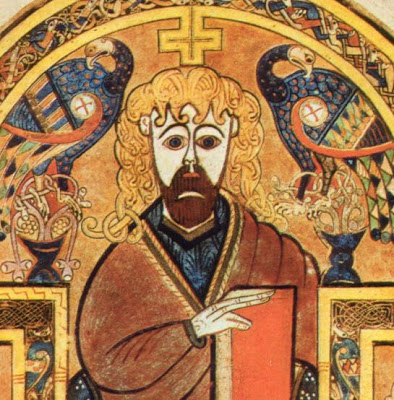 |
| View of Iona Island from inside Fingal's Cave wikimedia |
Such truly long-term divine planning comes to my mind with the unique view from deep inside Fingal's Cave in the Staffa Island in Inner Hebrides. The visual focus and conformity given by the opening of the cave towards the Island of Iona brings together a very special combination of elements: Nature, Church history, Classical music and the Apostolic mission to proclaim good news about Jesus Christ, the Son of God, starting from Jerusalem and Samaria and to the end of the world.
God's long term plan according to the Epistle to the Ephesians
Praise be to the God and Father of our Lord Jesus Christ, who has blessed us in the heavenly realms with every spiritual blessing in Christ.
For he chose us in him before the creation of the world to be holy and blameless in his sight.
In love he predestined us for adoption to sonship through Jesus Christ, in accordance with his pleasure and will— to the praise of his glorious grace, which he has freely given us in the One he loves.
In him we have redemption through his blood, the forgiveness of sins, in accordance with the riches of God’s grace that he lavished on us. With all wisdom and understanding, he made known to us the mystery of his will according to his good pleasure, which he purposed in Christ, to be put into effect when the times reach their fulfillment —to bring unity to all things in heaven and on earth under Christ.
In him we were also chosen, having been predestined according to the plan of him who works out everything in conformity with the purpose of his will, in order that we, who were the first to put our hope in Christ, might be for the praise of his glory.
And you also were included in Christ when you heard the message of truth, the gospel of your salvation. When you believed, you were marked in him with a seal, the promised Holy Spirit, who is a deposit guaranteeing our inheritance until the redemption of those who are God’s possession—to the praise of his glory.
Ephesians 1:3-14 NIV
God's Carpentry shop - Fingal's Cave
 |
| Entrance to Fingal's cave wikimedia |
The formations create a magnificent cave that resembles a natural cathedral. And that's what it is.
Divine acoustics
Fingal's cave is famous for the acoustics and how the sound of the waves repeat on the walls and vaults. Felix Mendelssohn visited the cave in 1829 and was immediately taken by the sounds. He was given a beautiful melody to go with the sounds - this is how I see it - and wrote to his sister a letter including the main theme.
Mendelssohn developed the theme in what is today known as Fingal's Cave Overture (or The Hebrides Overture) - a very special peace that has since become a beloved treasure of Western classical music.
Here it is conducted by none less than Claudio Abbado himself youTube
Island of Iona
This is an amazing cradle of Christianity among the Europaeans, a burial ground of Scottish tribal heads and kings, a monastery where the Book of Kells was began...
Why all this?
Well, Mikko, you are claming that God Himself created Fingal's cave as a natural cathedral with unique majesty and beauty, exceptional acoustics and that His holy angels even gave a melody to Felix Mendelssohn as a gift to the entire humanity. And He began to work on it already millions of years ago when forming the Hebrides Island and when not one human being had yet been born?
Why would God do something like that and aim the view from inside the cave across the sea to the Island of Iona?
I think for two reasons
Firstly, that we would appreciate the memory of the Irish and Scottish Christians, mostly monks in the monasteries in the rough islands of the Hebrides, Ireland and High Lands of Scotland, who so bravely spread the Gospel to Europe. Even the patron saint of my country Finland, Saint Henrik, who brought Christianity literally to the "end of the world" (fin-landia) and was later murdered by a Finn, apparently came from the British Isles.
Secondly
that when we are meditating and wondering all this, the majesty and beauty of Creation in and around Fingal's cave, the awesome rolling of the Atlantic waves, the arrival of Christianity from Jerusalem to Ireland and Scotland and from there on to Germany, Scandinavia, even Finland, and when listening to the wonderful music of Mendelssohn, a melody and composition that truly is a gift to humanity, and when remembering that we also have been taken to the Kingdom through the water of baptism and the Spirit of new birth, despite of all what we are and do and ...
with all this and more we would just simply bow down our heads in front of our God and say
"Thank you, Father".
For this is the real purpose why we are here to the glory and praise of His amazing grace, predestined to be for His glory, as said three times in the above quoted passage from the Epistle to the Ephesians1:
to the praise of his glorious grace,
for the praise of his glory
to the praise of his glory
It is not a bad idea once inside Fingal's Cave also to remember how Rex Regum, the King of Kings, taught us to pray - and to do so!
Our Father in Heaven
hallowed be thy name
thy kingdom come
thy will be done





